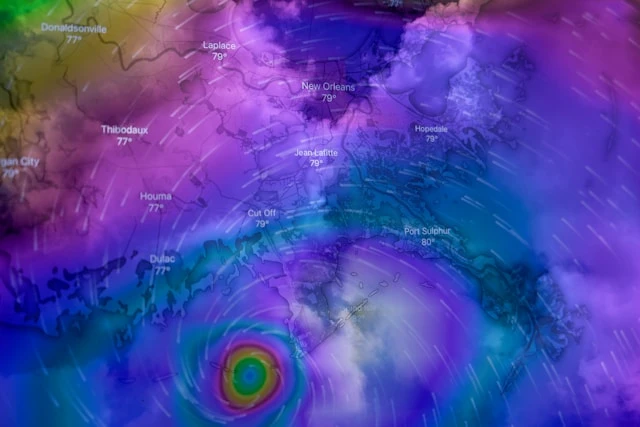Real-time weather data has become essential for everyone from casual users to professionals in fields like aviation, agriculture, and event planning. It helps them make informed decisions, anticipate severe weather, and plan daily activities or operations effectively. Below, we explore five popular tools for real-time weather monitoring. Each offers unique features and levels of accessibility, making them useful for a variety of purposes.
Weather Underground
Weather Underground, one of the most established platforms in weather tracking, collects data from over 250,000 personal weather stations worldwide. This extensive network allows it to provide hyperlocal weather updates, which are especially helpful in areas where traditional data sources are sparse. With user-friendly web and mobile interfaces, Weather Underground makes weather monitoring accessible and intuitive for everyone.
Its standout features include customizable severe weather alerts and comprehensive historical data access, useful for both everyday users and professionals. The historical data feature supports trend analysis, making it easier for users to study weather patterns over time, which is invaluable for researchers and those involved in climate-related fields. The platform also allows users to integrate their own personal weather stations, further enhancing its community-driven approach to weather tracking.
Ideal for: Meteorologists, farmers, researchers, and individuals needing precise local weather insights.
AccuWeather
AccuWeather is widely known for its reliability and accessibility, providing localized weather data for over three million locations worldwide. The tool’s signature feature, MinuteCast®, offers minute-by-minute forecasts of precipitation for the next two hours. This is particularly beneficial for outdoor event planners, travelers, and those who need highly specific short-term weather information.
In addition to MinuteCast®, AccuWeather’s advanced alert system keeps users updated on severe weather conditions like thunderstorms, hurricanes, and tornadoes. These features, combined with its global reach, make AccuWeather ideal for users who need accurate, up-to-the-minute forecasts regardless of location. The platform’s app and website are both easy to navigate, and the app’s responsive design makes it functional even in low-signal areas, a plus for users in remote locations.
Ideal for: Travelers, outdoor event organizers, logistics companies, and emergency response teams needing reliable, detailed weather alerts.
WeatherView32
WeatherView32 is a specialized, desktop-based weather monitoring tool geared toward users needing detailed, customizable analysis capabilities. Although it lacks a mobile app, WeatherView32 remains a powerful choice for scientists, educators, and professionals seeking a robust and flexible desktop weather solution. The platform’s interface can be tailored to display the most relevant data, including temperature, humidity, wind patterns, and more, which can be a major asset for professional users.
This tool includes real-time radar and satellite feeds, which give users a visual overview of current weather patterns. Additionally, WeatherView32’s data logging feature is highly useful for long-term analysis, as users can graph data trends over time and even export them for external analysis. Its reliance on satellite and radar data, along with custom visualization options, makes WeatherView32 a valuable resource for users needing in-depth monitoring and data collection capabilities.
Ideal for: Researchers, educators, agriculture professionals, and anyone interested in historical weather data tracking.
Windy
Windy is a visually dynamic platform that appeals to users who need to monitor detailed weather patterns, particularly wind and wave forecasts. Popular among pilots, sailors, and outdoor sports enthusiasts, Windy provides map-based, real-time data visualization, allowing users to view weather patterns over large regions. It employs multiple weather models, such as ECMWF, GFS, and ICON, giving users the flexibility to choose the model that best suits their needs.
The tool’s multi-layered view makes it easy to overlay and analyze various weather factors, including wind speed, precipitation, temperature, and humidity, all in real time. For instance, you can simultaneously view wind speed and wave height, making it useful for planning activities like sailing or windsurfing. Windy’s interface is intuitive, enabling users to interpret complex data quickly and efficiently. Although the platform offers a premium version with additional features, the free version is robust enough for general users.
Ideal for: Pilots, maritime professionals, outdoor athletes, and renewable energy sectors focused on wind or wave forecasting.
ClimaCell (Tomorrow.io)
Tomorrow.io, formerly known as ClimaCell, differentiates itself by using unconventional data sources like cell towers and connected vehicles to deliver highly precise, hyper-local forecasts. This data integration allows the platform to deliver accurate forecasts even at a street-by-street level, making it an invaluable tool for users in urban planning and emergency response. Tomorrow.io’s predictive weather intelligence, powered by artificial intelligence, provides impact-driven insights that anticipate how weather will affect specific operations, allowing for proactive planning.
For businesses, Tomorrow.io offers a Weather API, which allows companies to embed real-time weather data directly into their own operational systems. This feature is particularly beneficial for industries like logistics and transportation, where delays and safety are often weather-dependent. The platform’s AI-based recommendations are designed to mitigate risks and disruptions, making it an essential tool for companies that need to monitor weather closely to avoid operational issues.
Ideal for: Businesses, logistics and transportation, city infrastructure planners, and anyone needing granular, impact-driven forecasts.
Conclusion
The five tools above demonstrate the diverse approaches to real-time weather monitoring, each tailored to suit specific needs and user profiles. Weather Underground and AccuWeather are excellent choices for general users, offering reliable, user-friendly experiences and highly accurate forecasts. WeatherView32 and Windy are designed for more specialized applications, with features that appeal to users needing in-depth weather data analysis or real-time, map-based monitoring.
Tomorrow.io is ideal for businesses and city planners, delivering actionable, hyper-local insights that help mitigate weather’s impact on day-to-day operations. Each tool on this list provides critical weather insights in real-time, empowering users to make well-informed decisions, reduce risks, and ensure safety across various fields and activities. Whether you’re an individual checking the forecast for the day or a business monitoring severe weather conditions, these tools help keep you prepared and informed.

